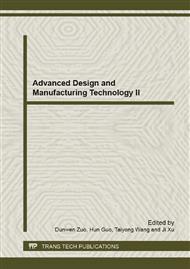p.3
p.10
p.22
p.26
p.31
p.34
p.39
p.45
Design and Implementation Full Automatic Intelligent Control System Oriented to Vacuum Casting
Abstract:
Based on craft features analysis of vacuum casting, this paper concluded that the automation level and control precision of control system are key influencing factors for products quality of vacuum casting. So the purpose of this paper is to resolve these disadvantages of existing control system of vacuum casting equipments. This paper designed a new full automatic intelligent control system which adopts two-level distributed structure. The system is consisted of motor control subsystem, vacuum monitoring and control subsystem, and bubbles detecting and eliminating subsystem. According to the function requirement of control system, this paper described selection and configuration of hardware and function implement of software in detail. Finally, this paper designed and realized a new automatic detecting and eliminating method of bubbles based on vision sensor technology, and presented an intelligent controller model based on Wavelet Neural Network (WNN) for motors. The experimental prototype of vacuum casting has been developed and a large number of experiments have been carrying on. These new controlling algorithms have being tested. The control system integrates vision sensor, intelligent control, microcomputer interface and imaging processing technologies, so it possess high precision, efficiency and flexibility and has a good market application prospect and high economic value. It will be breakthrough for precise rapid tooling.
Info:
Periodical:
Pages:
10-21
Citation:
Online since:
March 2013
Price:
Сopyright:
© 2013 Trans Tech Publications Ltd. All Rights Reserved
Share:
Citation:


